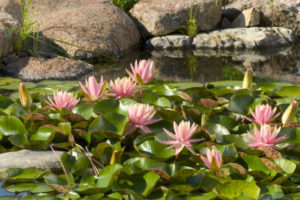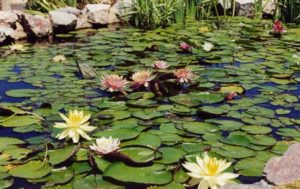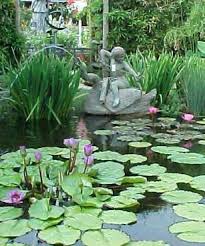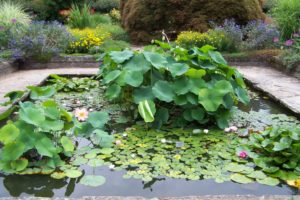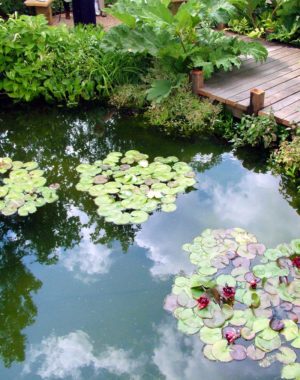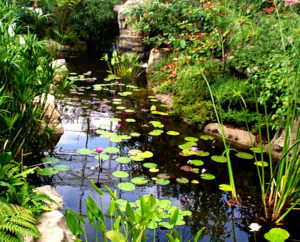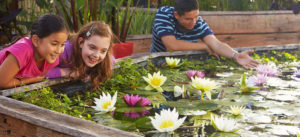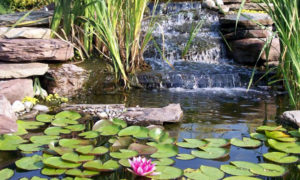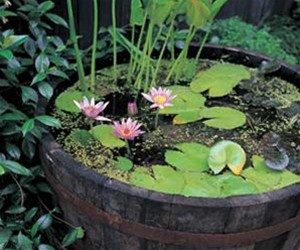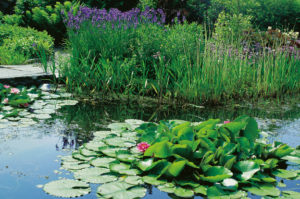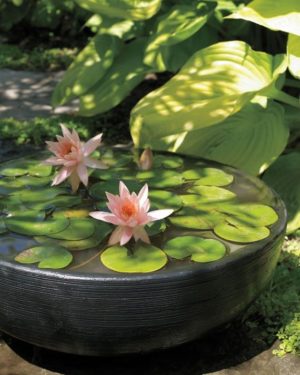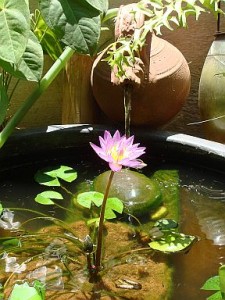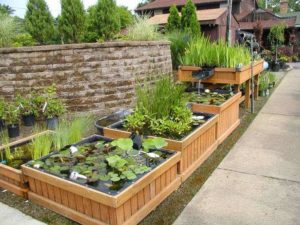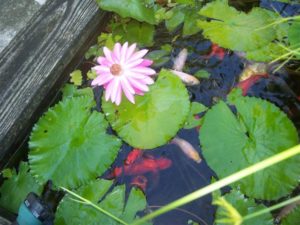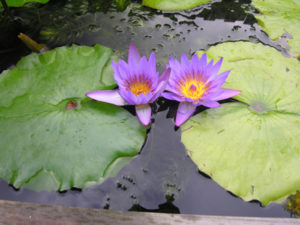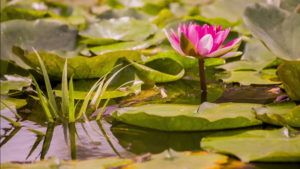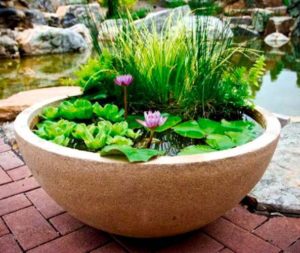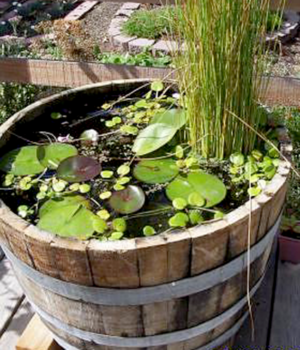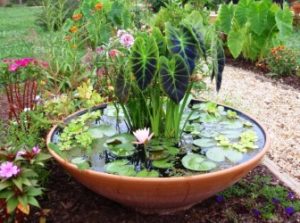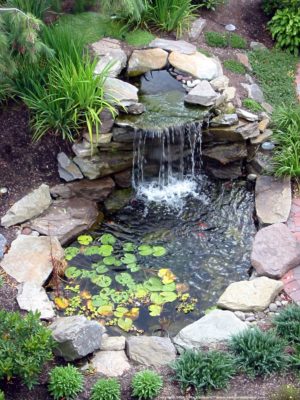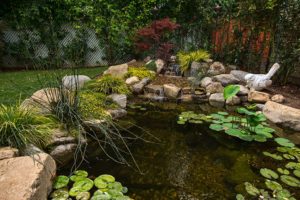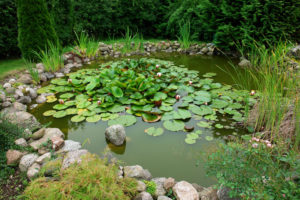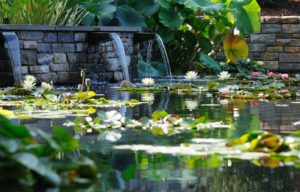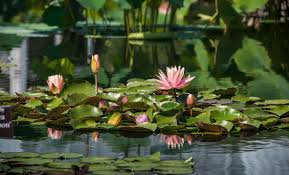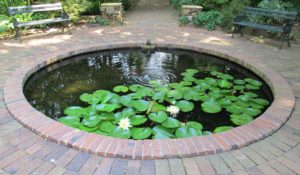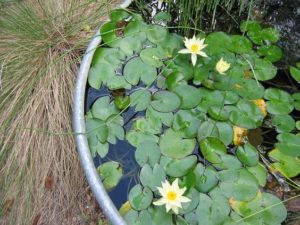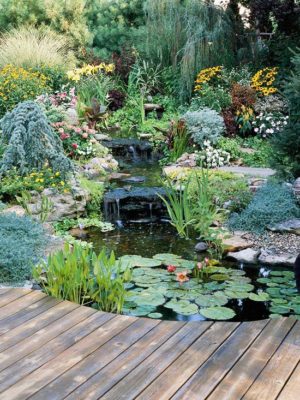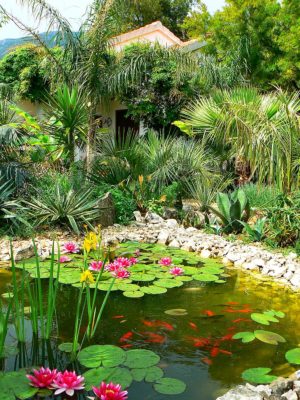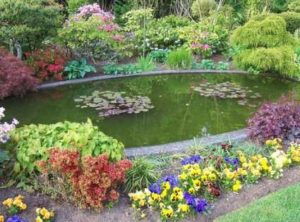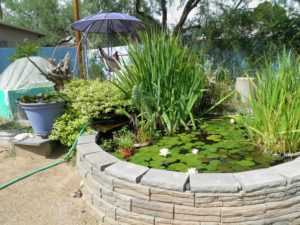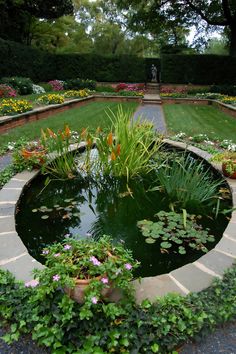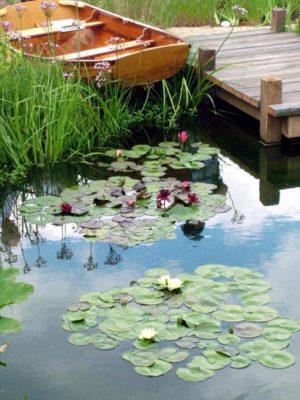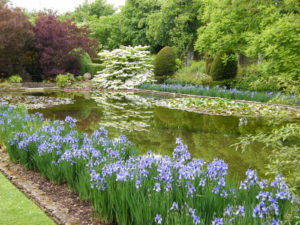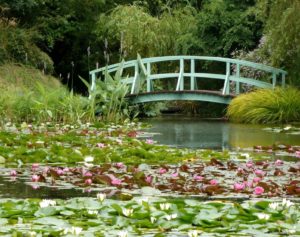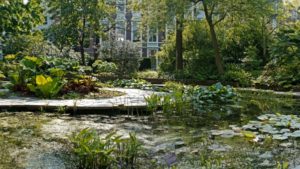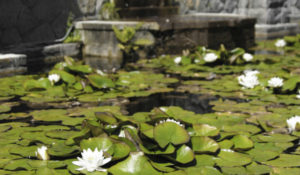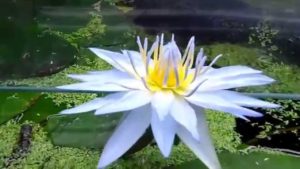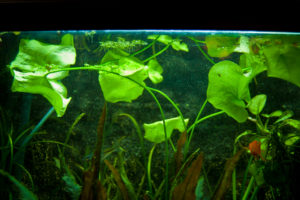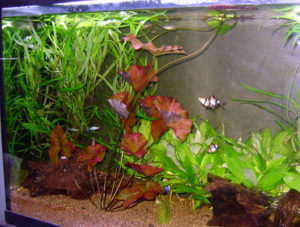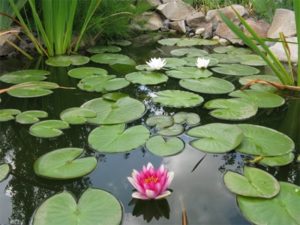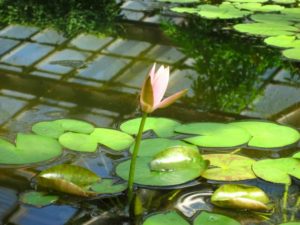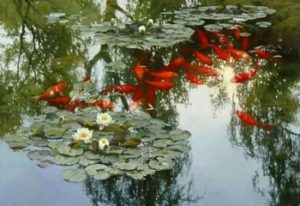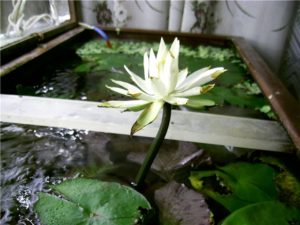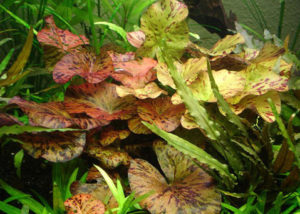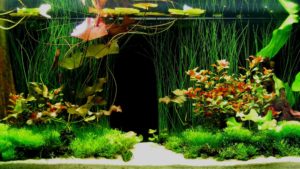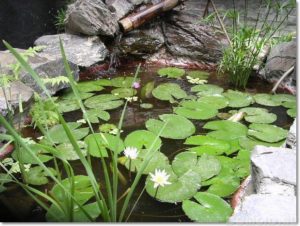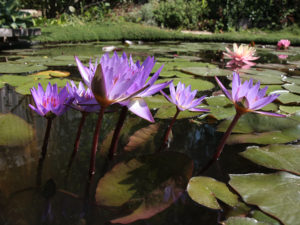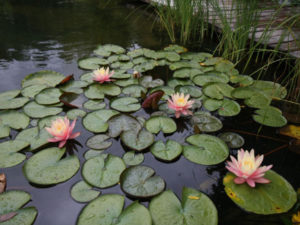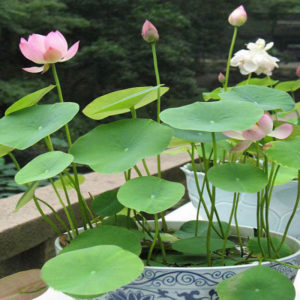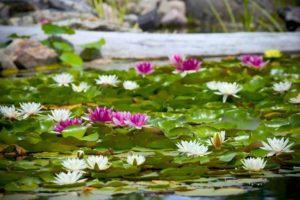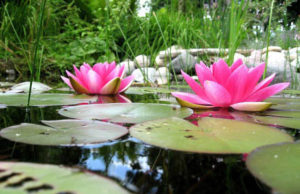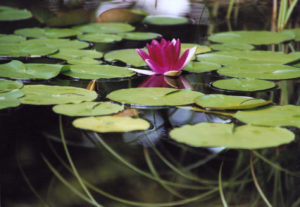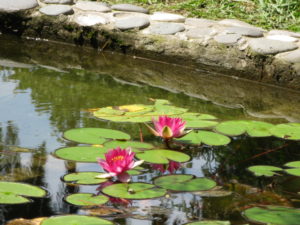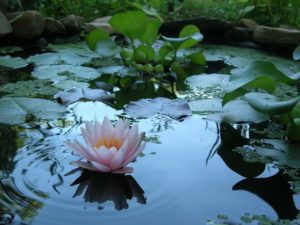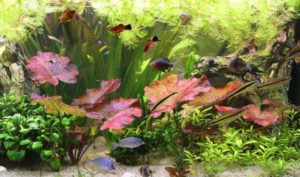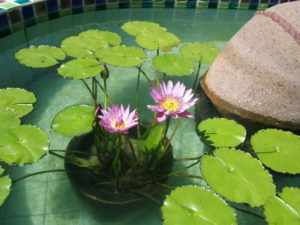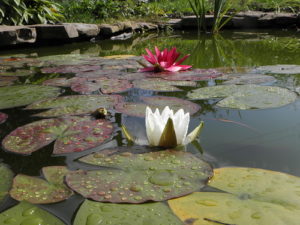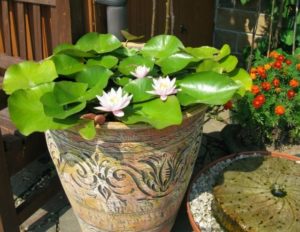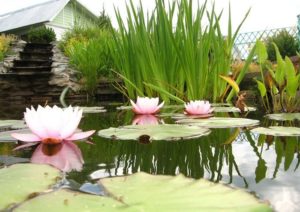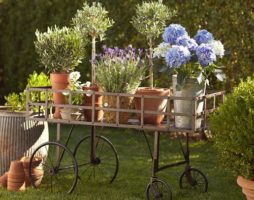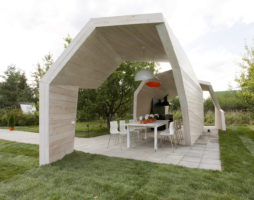When talking about the beauty of flowers, consciousness for some reason includes associations exclusively with representatives of terrestrial vegetation. But if you look, then the absolute queen of flower beds - roses - has a completely worthy competitor, whose name is nymphaeum. A lovely plant settled in ponds, pools and other small summer cottages.
A water lily is often called a flower from a fairy tale. Many legends are devoted to this unique plant-mystery. Its beauty inspired poets and artists, and the fact that today this splendor can decorate the landscape of any inhabitant is also a real miracle, but of a slightly different quality. This fact is the merit of breeders and admirers of these plants, who are ready to selflessly care for water beauties.
Nymphaeum for the pond
Description
Water lily is a representative of perennials. It is quite common in the world. Today, more than 50 species of this plant are known, but red nymphaeum is of particular interest for our latitudes. And not only because it tolerates frost well. There is another reason for the popularity of this particular species, namely: the possibility of planting a nymph in an aquarium.

Nymphea red in the aquarium
It is impossible not to fall in love with a water lily: any nymphaeum can bewitch with its beauty. What is worth only the unusual shape of the leaves! They, depending on the variety, can be heart-shaped or rounded. A juicy green carpet becomes an excellent backdrop for no less attractive in their shapes and colors, star flowers or cups. Moreover, some subspecies show a variety of tint spectra. A striking example is the red nymphaeum. Its buds can vary in shades of petals even within the same inflorescence. In general, nymphs for a pond can be:
- snow-white;
- cream;
- yellow;
- blue;
- orange.

Blue nymphaeum in the pond
Flowers can be simple in structure or double, densely packed with petals, like asters.
Nymphea is distinguished by its massive roots, but the impression of their power is deceptive. In reality, the seemingly strong processes are incredibly tender. The use of sand or fine pebbles when planting nymphs will help to avoid damage to the root.
Amazing flowers prefer stagnant water, so as an aquarium plant, the nymphaeum is just perfect. Water lilies also differ in the rhythm of life. Some species delight with their splendor in the daytime, others throw their buds into the night. Often open water lilies exude a delicate fragrance.
Nymphs are fans of heat and sun, so it will be difficult for them to survive in ponds located in dense shade. They are also picky about the soil. When planting a nymphaeum, in addition to sand and stones, nutrients and a lot of clay are certainly added to the soil mixture.

Nymphea - a sun-loving plant
Types of water lilies are classified as winter-hardy and tropical.
The first lives perfectly in any conditions, regardless of the climatic ups and downs of the geographical latitude in which they were brought. If you choose nymphs for the pond, then only from this group.They bloom magnificently all summer and will not cause much trouble with the organization of wintering.
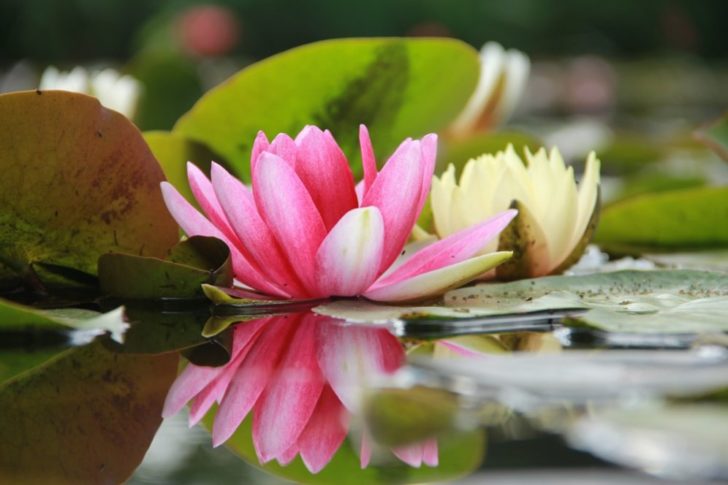
For the pond, choose winter-hardy varieties of nymphs
Tropical varieties are super tender and very moody. In a cold pond, they are completely uncomfortable, but as an aquarium plant, nymphs of this species are very much in demand. Their exoticism does not go unnoticed.
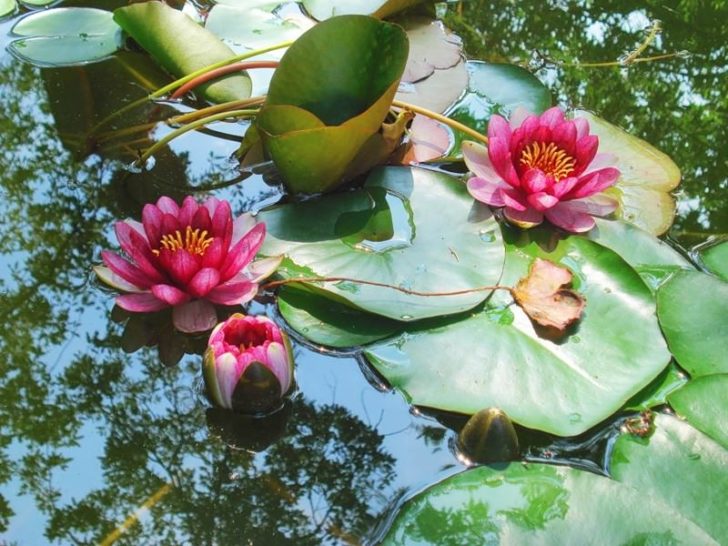
Tropical species suitable for aquarium decoration
In addition to varietal classification, water lilies are divided by size. There are groups of dwarf, small, medium and large nymphs. Today it is almost impossible to find their classic representatives in their pure form. Purebred plants have been replaced by more hardy hybrids, which take root not only in country ponds, but also in closed compact containers standing indoors. Breeders did a great job of adapting the representatives of the African flora, and now the bulk of the varieties are ready for life in a climate that is completely unsuitable for them by nature.
Another unusual feature of pond nymphs is their fruiting. A berry-like fruit is born and ripens under water, so for many, the fact that water lilies are fruit-bearing plants becomes a real discovery.

Nymphaeums are fruit-bearing plants
Regardless of where the nymphs will grow in an aquarium or pond, the quality of lighting and soil, the temperature regime and the regularity of feeding will be equally important to them.
back to index ↑Growing Secrets
"Nymphaeums are fans of proper nutrition, so they need to be fed more often and using complex balanced compositions"
The main questions that arise for those who want to have a red nymph or another subspecies of water lilies in the pond are related to the procedure for planting, care and wintering.
Landing nymphaeum
To avoid disappointment in the breeding of water lilies will help her proper landing in a pond. The ideal option would be to fill the basket with a mixture of sand, peat, black earth and clay.
All these components are very important for the formation and life of the nymph. But what about the pebbles recommended for use by experts? It is certainly needed, but only on condition that the flower lives in a small tank. In a more or less spacious pond, the presence of pebbles is highly undesirable, since the stone is able to change the composition of water at the chemical level.
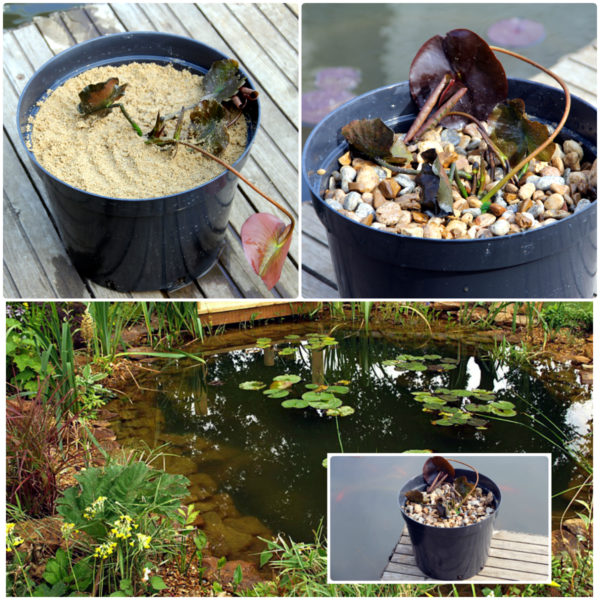
Planting a nymph in a pond
top dressing
Nymphaeums are fans of proper nutrition, so they need to be fed more often and using complex balanced formulations. The highest doses are given to water lilies during the growing season. Mineral supplements are applied weekly. Very much to the liking of the red nymphaeum meat and bone meal rolled into balls. It should be laid when planting a plant. The ball is placed between the roots.
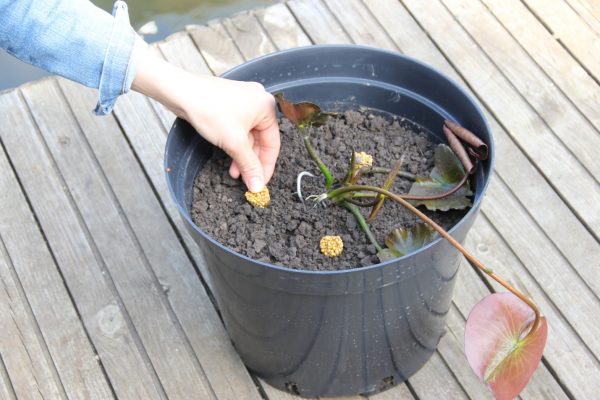
Nymphaeum feeding
Basic care
When growing water beauties, it is important to monitor the purity of the water. Not only the nymphaeum aquarium plant needs fresh water, but also varieties growing in open makeshift lakes. It is necessary not to be lazy to regularly clean the reservoirs from accumulations of dirt, and, if possible, also change the water in them.

Clean your pond regularly
Organization of wintering
The most frightening moment for beginners "water lilies". Nymphaeum in the aquarium is not threatened by sudden changes in temperature and severe frosts. To keep the nymphs in the pond, you have to try. If non-frost-resistant species are planted there, then the plants will have to be removed from the reservoir and sent to spend the winter in the basement. Leaving a water lily for a winter vacation is not a reason to forget about caring for her. The flower will need to add water to the container, as well as additional lighting.
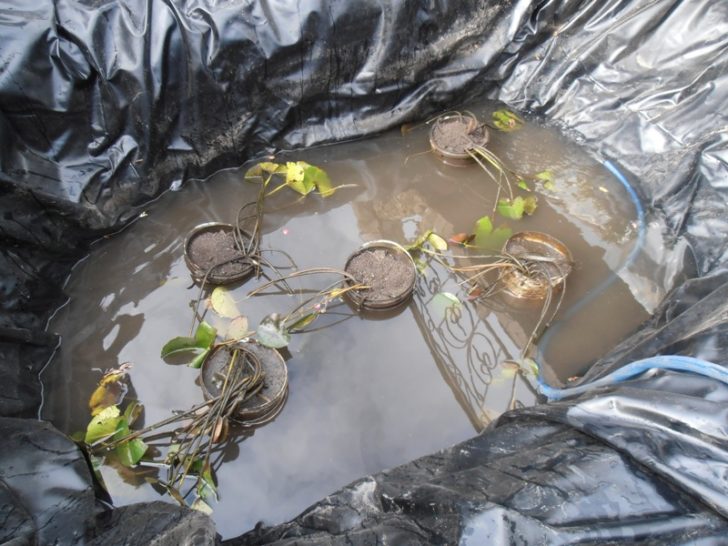
Preparing the nymph for the winter
Frost-resistant individuals can stay for the winter in their familiar environment. If they are provided with high-quality insulation, then the plants will not have problems. You can insulate the pond ... with snow. It seems to be illogical, but the method is time-tested and really works. He does not strain in the implementation.All that is required is simply to scoop up excess snow on the frozen water surface, which will always form when cleaning garden paths. The higher the snowdrift above the pond, the more comfortable the water lilies will overwinter.
back to index ↑nymphea aquarium plant
"As an aquarium plant, the nymphaeum has a height of 20-50 cm"
It can be difficult for nature lovers to come to terms with the fact that some specimens of flowers cannot appear in their home. Until recently, it was possible to admire water lilies only in natural reservoirs. Today, the red nymphaeum (and not only it) has become a regular in home aquariums. It is not known for certain who first decided on a desperate experiment and moved the nymph from the pond to such a modest tank, the main thing is that the result was quite successful. Now you can admire how the plant wakes up and releases its magnificent flower onto the water surface without leaving the room. It is enough just to wake up early in order to be in time for the beginning of the sacrament.
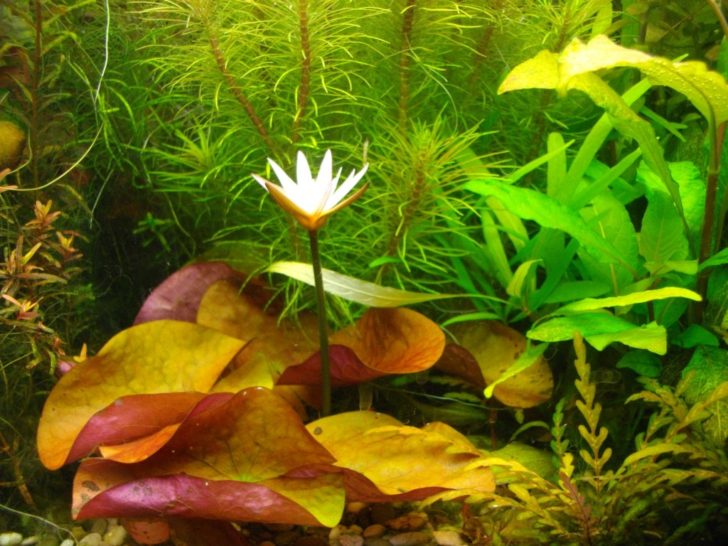
Nymphaeum in the aquarium
Nymphea red
Any water lily will look luxurious in the decor of the aquarium, but still experienced aquarists treat the tiger nymph, also known as the red one, with special trepidation. Some sources present her as a native of the West African regions, but there is no absolute confirmation of such information. The vast majority of florists are inclined to the theory of its artificial breeding. This does not prevent us from recommending the red nymphaeum in tropical aquariums. The tiger water lily is distinguished by an unusual color of the leaves. They have dark brown and purple inclusions on their surface. The leaf shape is heart-shaped.
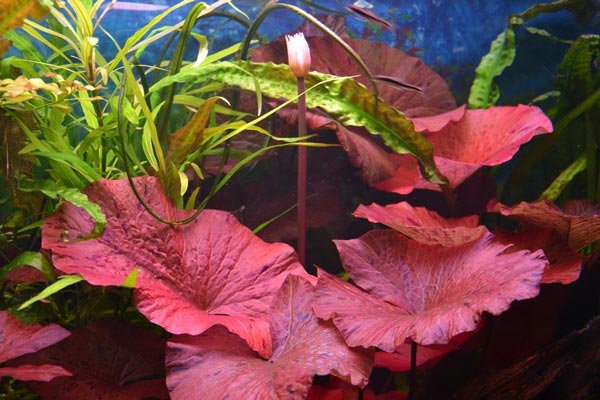
The red nymphaeum is distinguished by the bright color of the leaves.
As an aquarium plant, the nymphaeum has a height of 20-50 cm. The size of a leaf in an adult reaches 15 cm. The diameter of the spreading bush varies between 20-45 cm. The leaves are thrown out by a stem rosette. If the nymphaeum in the pond has root processes up to 5 cm in diameter, then the aquarium options cannot boast of the power of the system. However, for decorative water lilies, it is quite enough to release a strong stem and form a pedicel. The flowering period falls on the second part of summer, however, when creating an optimal climate, you can see white and pink flowers even earlier.
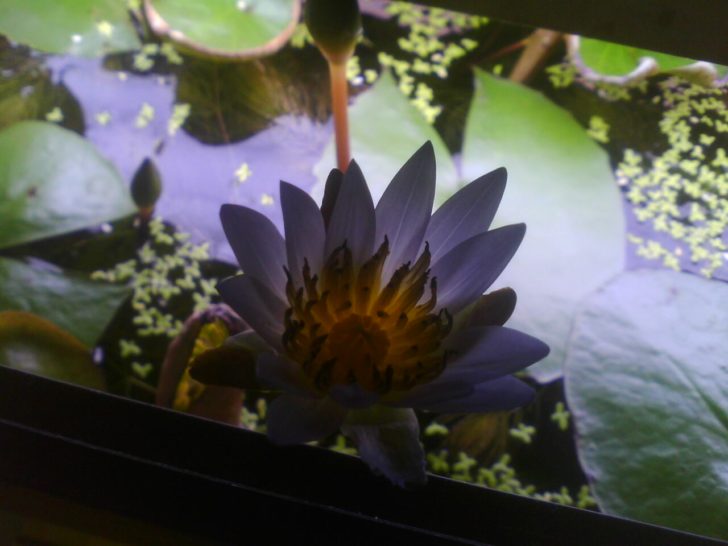
Flowering nymphs in the aquarium
Keeping a red nymph in an aquarium
The tiger water lily is classified as a finicky aquarium inhabitants that require increased attention. Failure to comply with the rules of maintenance is fraught with death for young nymphs. The bright star of the aquatic flora requires an aquarium in which the height of the water will be at least 45 cm. In addition to depth indicators, water hardness parameters are also important. Nymphea red needs a soft, slightly acidic environment with a pH of 6 or 6.5. The issue is solved by introducing humic acids into the soil. This does not mean that a nymphaeum in an aquarium cannot grow in hard water. She will survive, but the bush will grow in breadth, its leaves will be crushed and will never rise above the water. It is also not necessary to count on the flowering of such an instance. This is another proof that the aesthetics of the nymphaeum and the issue of its flowering are completely in the hands of the owner.
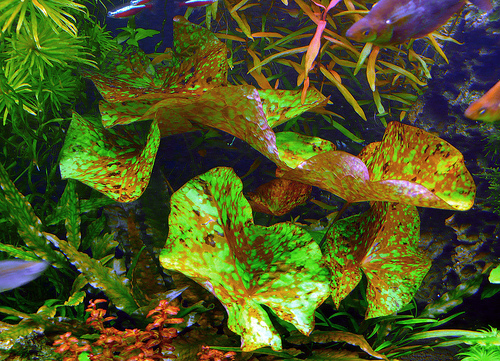
Nymphea is classified as a finicky aquarium plant.
How often should the water be changed
Considering that in nature water lilies are quite comfortable in stagnant water, its frequent replacements are not expected. On the contrary, they are contraindicated, since the plant prefers stale water enriched with derivatives of the decomposition of organic compounds. Like a nymphaeum in a pond, a replacement of about a fifth of the volume of water in the tank will be enough for an aquarium resident.
Microclimate
Loves indoor nymphaeum and warmth. Aquarium water should resemble tropical waters. It is desirable to keep its temperature within 280. A critical figure for the plant will be a decrease in this indicator by only some 6 degrees.Already at +220, the red nymphaeum can become so uncomfortable that it stops growing and, as a result, blooms. Having settled a water lily in a container, you need to take care of maintaining a constant microclimate in its habitat and avoid sudden temperature fluctuations.
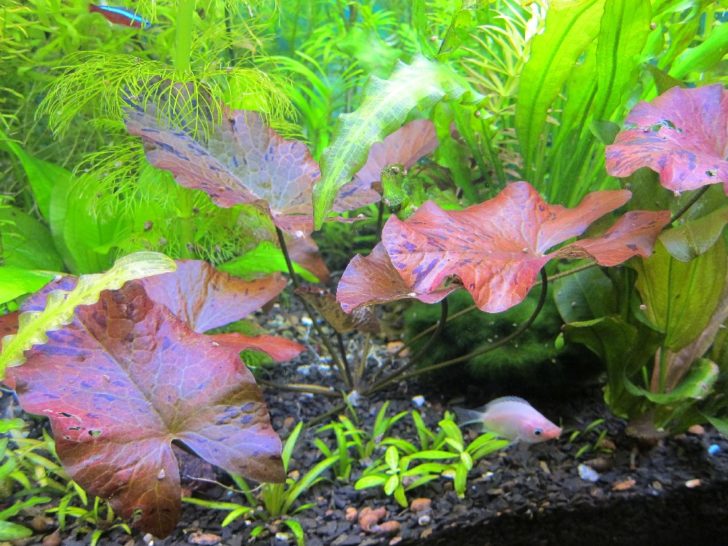
Indoor nymphaeum loves heat and moisture
top dressing
Even as an aquarium plant, the nymphaeum retains its love for regular feeding. Nutrient formulations should contain many minerals and iron salts. The lack of these substances will be signaled by the leaves of the plant. They will turn yellow.
Soil features
Planting a nymph in an aquarium has its own subtleties. In a limited space, a water lily should be planted in a soil mixture consisting of fine-grained pebbles and clay. The latter is rich in humic acids necessary for the harmonious growth of the plant. Stones can be replaced with peat. The minimum layer of filling the mixture is 5 cm.
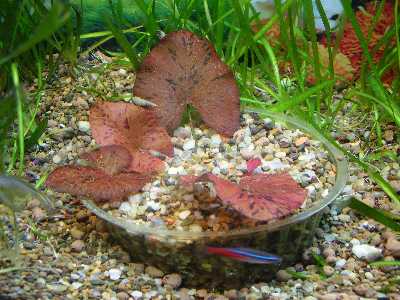
Planting a nymph in a container
In large aquariums, it is more convenient to plant red nymphs in clay pots. Here the scheme of actions will be as follows. The bottom of the pot is covered with a layer of pebbles, on top of which a mixture of earth, humus and sand is poured so much that the pot is filled by 2/3. A nymphaeum is placed on this pillow and its roots are fixed with a mix of pebbles and sand. Land should be taken of natural origin. It can be dug up in the garden, a nearby square. Shop options in this case are of little use, as they are enriched with special substances that can change the biological and chemical parameters of water, and this will have a bad effect on all living things present in the aquarium as a whole.
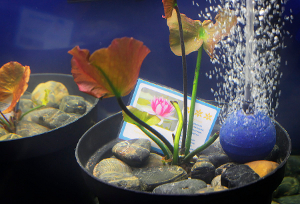
Nymphaeum in pots
Lighting
Nymphea red belongs to the "long day" group of plants, so it needs a powerful luminous flux of prolonged exposure. To this end, the aquarium will have to be equipped with a fluorescent, and ideally, with a specific phytolamp used for arranging greenhouses and greenhouses. In order not to burn the leaves of the water lily, it will be correct to raise the lamp above the water by about half a meter. Simple incandescent lamps for growing nymphs in an aquarium are categorically not suitable. A very good solution would be to install the aquarium so that it receives natural light for as long as possible. Light day for a nymphea aquarium plant should last about 14 hours.
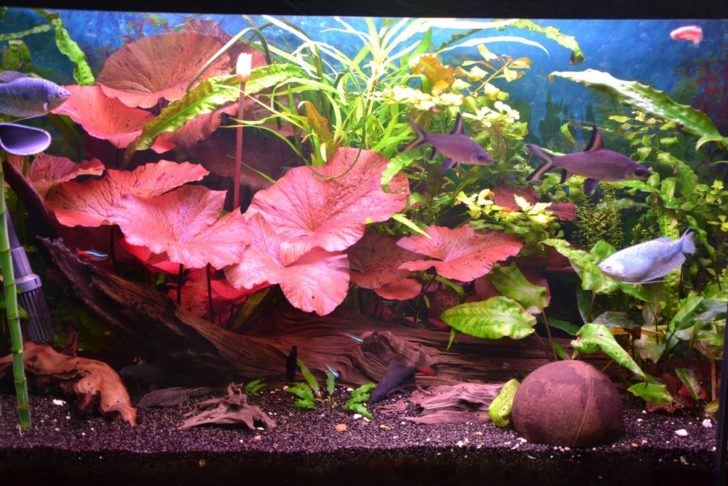
Light day for the nymph should last about 14 hours.
reproduction
Tiger water lily is bred by division or grown from seed. When creating optimal conditions for the existence of a nymph bush, after flowering, it throws out young, horizontally extending processes. They are carefully separated at the level of the roots and planted in a separate pot. For the mother bush, this is a very useful procedure, since an overgrown nymph does not feel very good in the aquarium.
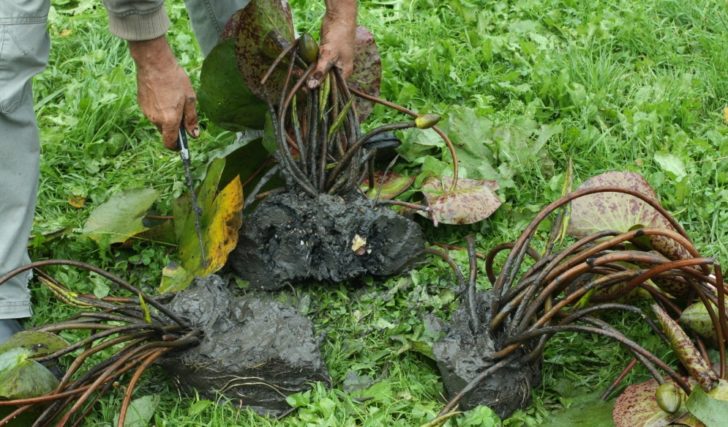
The division of the nymphaeum bush
To obtain seeds, artificial pollination of water lily flowers is carried out. The tool for the procedure is a soft brush used by schoolchildren for drawing. She repeatedly passes through the axils of the petals. It is best to do this in the early morning hours, as soon as the red nymphaeum wakes up. To remove seedlings, seeds obtained from fruits are placed in a tank with a peat bottom and settled water. After germination, young water lilies are transferred to the soil from a mixture of sand and peat.
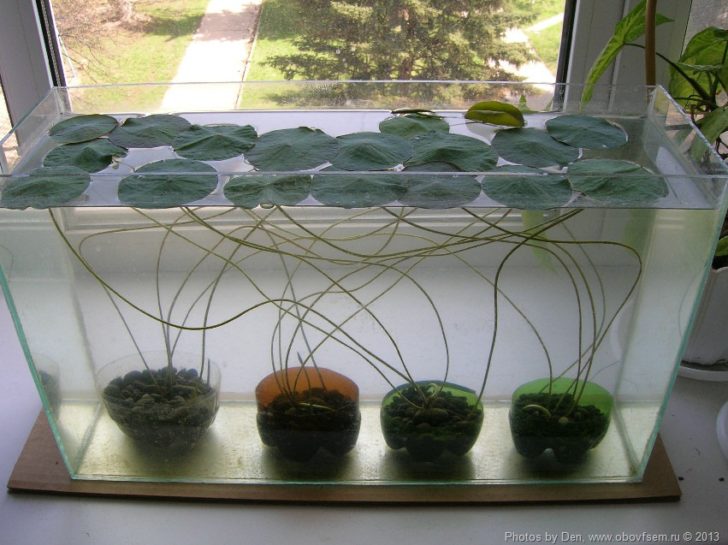
Growing seedlings of nymphs
It is difficult to grow a nymphaeum from seed, but it is the only way to get an abundance of planting material. It is usually used in cases of breeding a nymphaeum aquarium plant for sale or for planting a nymphaeum in a pond.
back to index ↑Conclusion
Nymphea red is the most beautiful representative of the genus, suitable for breeding in any conditions. To enjoy its unusually impressive flowering does not need to make a titanic effort. A little care - and the gratitude of the flower will have no boundaries.
Photo gallery - nymphea for aquarium and pond
Video
